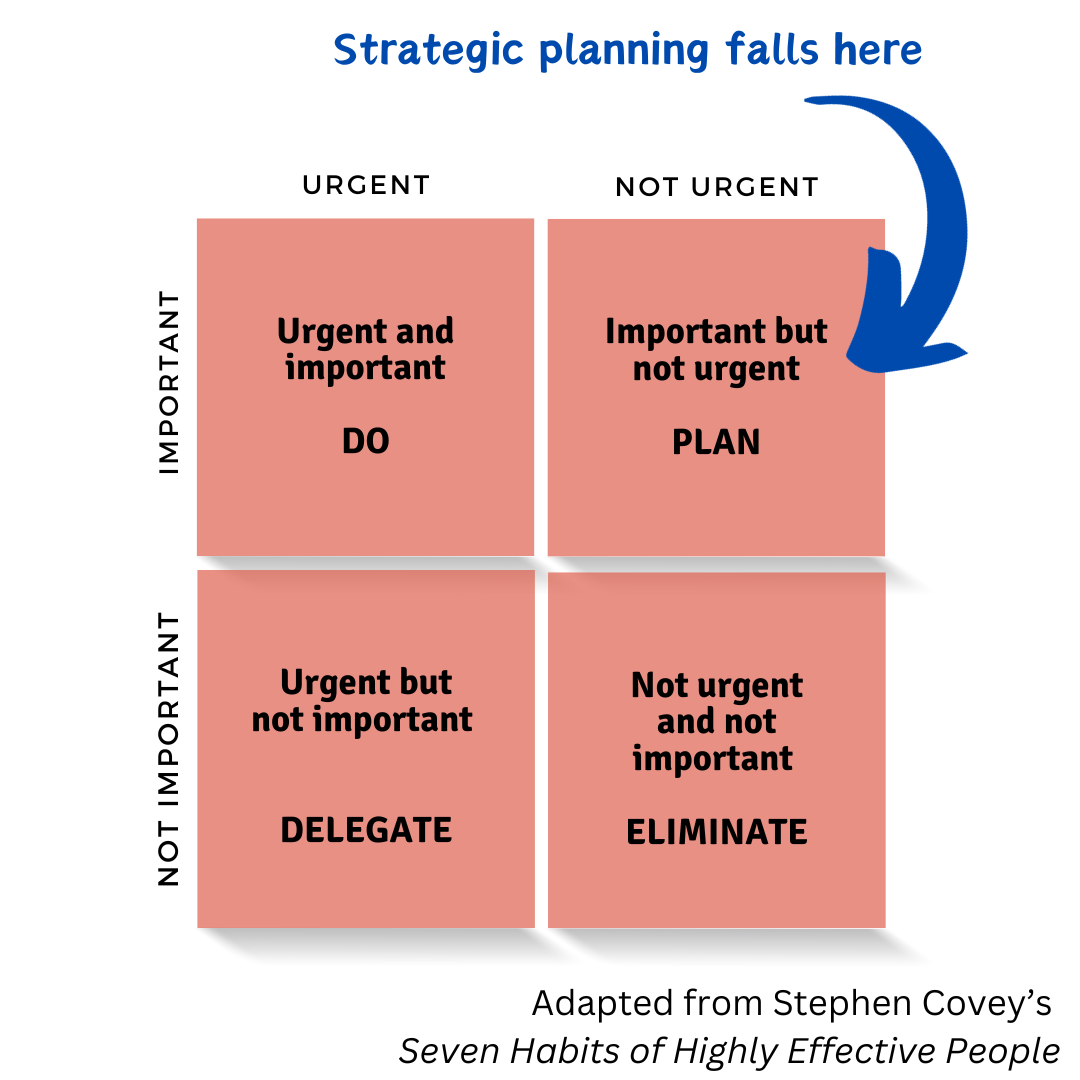Turn These Three Fears About Strategic Planning into Opportunities
It is common for leaders to feel some apprehension about undertaking a strategic planning process, nevertheless, in many cases these initial worries can become opportunities. Here are three fears we frequently hear and how we recommend overcoming them.
Fear: “We are already overloaded with serving our mission day-to-day. How will I make time for working on a strategic plan on top of everything else? Our team would be totally overwhelmed if I asked them to take on one more thing!”
Opportunity: In the Seven Habits of Highly Effective People, Steven Covey writes about the importance of working on the highly important and non-urgent issues. Strategic planning falls in this category. Strategic planning will never knock on your door urgently, however, it is an extremely important activity for a successful organization to engage in. It enables an organization to most effectively make use of its resources, overcome obstacles, and seize opportunities to achieve its mission all while engaging and inspiring staff, board, clients, funders, and partners in its important work. With a clear strategic plan in place, the day-to-day overwhelm decreases because you and your team have clarity about who you are as an organization, and on what priorities you should (and shouldn’t) focus.
Despite the additional work of strategic planning, nonprofit staff frequently note during the planning process how inspiring, connecting, and reassuring it is to them to zoom out and work with their colleagues on addressing broader organizational challenges and creating the future of their organization.
Fear: “Staff and board will be frustrated or angry if we ask for their input into the plan, but then we don’t adopt and follow every idea they propose.”
Opportunity: People typically desire the opportunity to be included and heard even when it may not be possible to implement all their ideas. We start every strategic planning process with clear decision rules, so that everyone knows how and when decisions will be made. With clear expectations in place, staff, board, and other constituents can freely express ideas that can be considered for the plan, understanding that while all ideas will be thoughtfully considered and engaged with in a collaborative prioritization process, not all ideas may ultimately be adopted. Even so, staff and board members experience greater engagement with the organization’s work from the inclusive process.
Fear: “If we have a written plan in place, then we will be constrained and won’t be able to respond to new opportunities or adapt to new ideas not explicitly written in the plan.”
Opportunity: As the world evolves, so should your strategic plan. Your strategic plan provides insights into your organization’s core strengths and identity — and a roadmap for priorities in the years ahead. It is not a rigid instruction manual for each step to take and when, but rather a guide that can change as the environment and circumstances change. While clients implement their plan, we recommend they hold at least an annual session with the board, strategic planning committee, and/or full staff to evaluate how the plan goals and strategies still reflect the organization’s priorities and circumstances, and then adapt the plan as required to fit the organization’s needs at that time.

